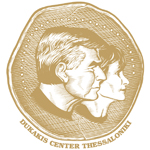Dukakis Center commemorates Armenian Genocide, friendship between Anatolia and Armenian Community

2015 has been the year of the 100th anniversary of the beginning of the Armenian Genocide. The Dukakis Center marked the commemoration in February with a lecture by Armen Marsoobian, Professor of Philosophy and Chair of the Philosophy Department at Southern Connecticut State University, on efforts to memorialize the experience of Armenians in Asia Minor at the beginning of the twentieth century.
Professor Marsoobian shared his recent experience mounting exhibitions of photographs from his family collection in Istanbul, Merzifon, and elsewhere. The photographs, taken by members of the Dildidian family, one of whom happened for a time to be the official photographer of Anatolia College in Merzifon, represented scenes from Merzifon and Samsun, and shed light on the social life of the Armenian community on the eve of the Genocide.
An audience of some 80 guests, many of them youth from the local Armenian Community, heard Professor Marsoobian share his conception of memorializing the experience of this community as a means of helping overcome the genocide denial that is still prevalent in Turkey today. He showed several historic photographs along with views from the exhibitions themselves. He described the impact of the exhibitions and some of the efforts he made to discover hidden or obscured monuments to the Armenian presence in Anatolia in the early part of the century.
The most moving part of Professor Marsoobian’s talk was a pair of brief clips with interviews of his mother and his uncle before they passed away, detailing some of their recollections of their family life in Merzifon and their relations with the Turkish population there. Marsoobian tried thus not only to document the facts of the Genocide, but also to provide vignettes of the daily life of Armenians before tragedy befell them.
In his introductory remarks David Wisner, Director of the Dukakis Center, observed that Professor Marsoobian’s lecture was meant in part to celebrate the relationship between an institution, Anatolia, and a community, the Armenians of Asia Minor and of Thessaloniki.